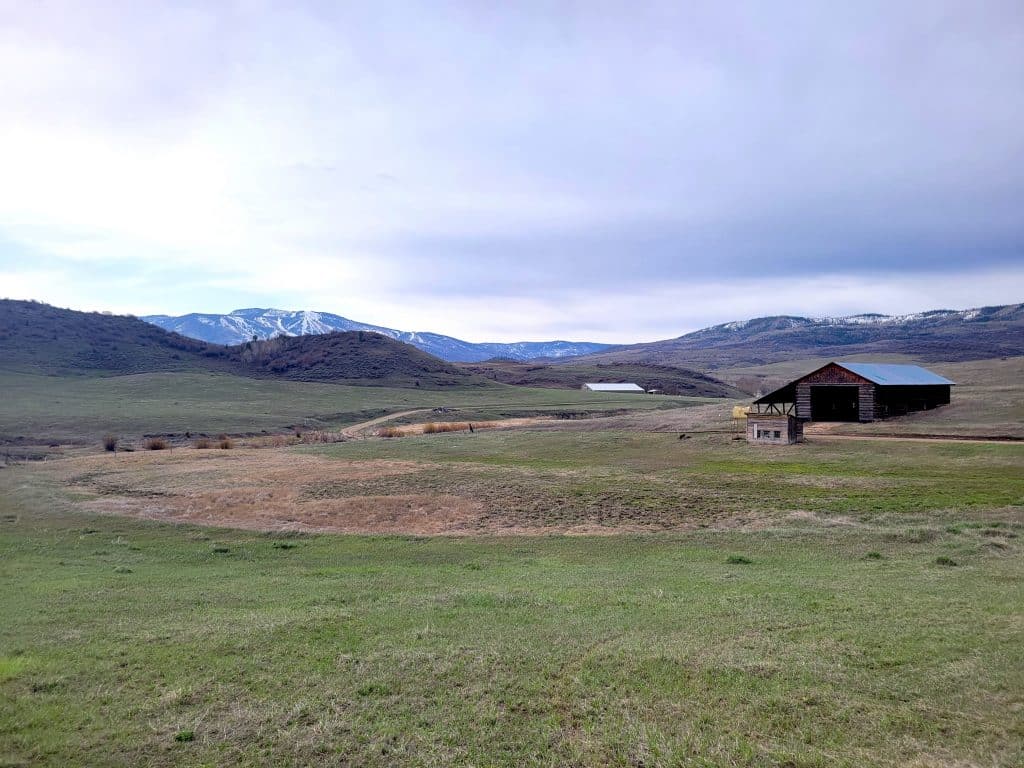Despite trust issues, growth concerns, Brown Ranch engagement process nears next phase

Dylan Anderson/Steamboat Pilot & Today archives
The Brown Ranch community engagement process, now approaching its fifth month, reached a milestone last week as the Deliberation and Stewardship Team seemed to coalesce around moving forward to Phase 2 of the process — despite persistent concerns about trust and Steamboat Springs’ tolerance for growth.
In March 2024, Steamboat voters rejected the Brown Ranch annexation proposal required to move the project forward. The defeat paused development and prompted city leaders and housing advocates to seek new ways to engage the public and find consensus on the project’s feasibility, prompting creation of the 40-member DST as well as a project collaboration team bridging the city and the Yampa Valley Housing Authority.
Phase 1 of this city-led parallel process, which began in April and is scheduled to conclude at the end of August, was designed to gauge whether there is a path forward for Brown Ranch at all.
As of last week’s DST meeting, the answer appeared to be a tentative “yes.”
What began as a series of monthly 3.5-hour DST meetings facilitated by consultant firms Community Builders and The Civic Canopy, in tandem with occasional community workshops, has evolved over the past two months into a multi-layered engagement process that includes specialized DST “inquiry” teams to investigate specific technical questions — along with over 25 intimate small-group meetings with specific stakeholder groups, with the aim of expanding the scope and depth of community participation.
Bill Fulton, founder and executive director of consultant group The Civic Canopy, while acknowledging that the deliberate pace of the engagement process has tested patience, ultimately defended the methodical approach.
“We knew from the outset that this first phase would feel slow and even frustrating at times. That was by design,” Fulton said. “We brought together people with very different perspectives to surface tough questions and build mutual understanding before rushing to conclusions.”
The strategy, he said, is beginning to yield results.
“Despite the tension, we’re seeing promising common ground,” Fulton said. “A strong majority of the group supports continuing into Phase 2, and we’ve started to sketch out what a broadly supported version of Brown Ranch might look like that includes serving a wide range of incomes, is smaller and more locally focused than last time, includes transit and services, and is transparent, flexible and financially responsible.”
Halie Cunningham, a DST member who commutes to Steamboat from Hayden, expressed cautious optimism about the process evolution.
“I think we reached a point in this week’s meeting where even those who are maybe still on the fence about or against moving forward with exploring Brown Ranch as a housing solution … some minds were changed and some perspectives shifted,” said Cunningham.
The shift, said Fulton, represents movement from fundamental opposition to collaborative problem-solving.
“We’re starting to shift from whether to develop at Brown Ranch to how to do it well,” Fulton said, “and in a way that fits Steamboat’s character and needs, and that the community could support as part of an ‘all of the above’ approach.”
Housing authority faces persistent trust issues
Despite progress in the DST meetings, the housing authority continues to confront significant trust issues from community members that multiple participants identified as potential obstacles to any future annexation vote.
DST member and former city councilor Jim Engelken sharply criticized the housing authority’s approach.
“There are serious lingering trust and credibility issues from the perspective of the community at large,” Engelken said, emphasizing the scale of the concerns beyond the 40-member DST. “The reputation and the public relations problem with that group, from the housing authority perspective, is big enough that it’s going to prevent anything happening at the Brown Ranch until the housing authority can improve itself.”
According to city Principal Planner Brad Calvert, the city has spent approximately $320,000 on the engagement process, with $245,000 going toward the consultant groups and the remainder toward Manifest Communications, a marketing group hired in early July to address communication issues frequently mentioned by Steamboat Springs City Councilors and community members alike.
Elliot Lawrence, the housing authority’s deputy director, acknowledged communication challenges while defending the authority’s presence in the process.
“We all kind of have acknowledged that we could do a better job of communicating what the plan is,” Lawrence said. “I think a misconception is that there’s already a plan or something in the works for Brown Ranch and there isn’t. We are committed to following this process.”
The housing authority has evolved its role throughout Phase 1 of the process, Lawrence explained.
“I think initially, we were told just to be observers and to let the process play out. Since the April and May meetings, that stance has evolved a little bit,” he said, noting that YVHA staff and board members now participate more actively in discussions.
Engelken, who was initially supportive of some version of development at Brown Ranch, said his perspective has shifted since a controversial soils report revelation and YVHA Executive Director Jason Peasley going on a 10-week leave, in addition to other perceived missteps by the housing authority.
“It’s been 16 months since the vote. We’ve heard nothing from them, and they’ve just continued to make a series of mistakes that have hardened people’s opinion of them,” said Engelken.
DST member Richard Mandell, a longtime local and former developer who unsuccessfully interviewed for the YVHA board in 2022, noted similar concerns — specifically with Peasley.
Mandell, who praised the facilitators and the DST for the progress made thus far, suggested that Peasley’s continued tenure as the housing authority remains problematic for the community, referring to Peasley as the “elephant in the room.”
City Manager Tom Leeson acknowledged the trust issues represent a significant challenge that must be addressed in the final report that the consultants will write following the final Phase 1 DST meeting on Aug. 26.
Phase 2 decision looms
As the DST prepares for its final Phase 1 meeting next month, Lawrence expressed optimism about the collaborative momentum.
“It felt like that we were moving as a group and a team, in the same direction with some give and take and people really listening,” he said of the July DST meeting.
Fulton outlined the August meeting’s agenda.
“In our final meeting of Phase 1 in August, we hope to pull together the shared understanding to date — of the vision, the scope of the problem, the possible solutions, and the community priorities for solving it — and outline a clear framework of what needs to be resolved in Phase 2 to move toward a successful community agreement.”
“From a timing perspective, really, the anticipation is that this will most likely go to some sort of election in 2026,” Leeson said.
For Cunningham and other stakeholders from outlying communities, the stakes are high.
“At the end of the day, this is probably going to come down to a vote,” she predicted. “There’s going to be people who are standing on the ‘not in my backyard’ pedestal, who are going to try to sway the vote again, and there’s those of us around the county who will be holding our breath and hoping that Steamboat citizens vote in favor of preserving what makes Routt County and the Yampa Valley special.”
“If we don’t do anything with Brown Ranch, it’s the nail in the coffin for the Yampa Valley trying not to become what we always say we don’t want to become, and that is an Aspen or a Vail,” Cunningham said.

Support Local Journalism

Support Local Journalism
Readers around Steamboat and Routt County make the Steamboat Pilot & Today’s work possible. Your financial contribution supports our efforts to deliver quality, locally relevant journalism.
Now more than ever, your support is critical to help us keep our community informed about the evolving coronavirus pandemic and the impact it is having locally. Every contribution, however large or small, will make a difference.
Each donation will be used exclusively for the development and creation of increased news coverage.









